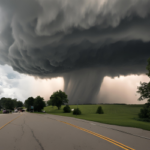In 2010, Laura Hillenbrand[1] published her biography of Louis Zamperini, entitled Unbroken: A World War II Story of Survival, Resilience, and Redemption. According to Wikipedia, the book spent more than four years on The New York Times best seller list, including 14 weeks at number one, making it the 5th longest-running nonfiction best seller of all time. Unbroken was subsequently made into a 2014 war-drama movie hit, produced and directed by Angelina Jolie.
A recap, ICYMI: Louis Zamperini had a rocky, largely delinquent youth, but in high school became an accomplished runner, competing in the 1936 Berlin Olympics in the 5000 meters (!). He then ran track at USC, graduating in 1940. World War II interrupted his athletic aspirations. He served in the Army Air Force in the Pacific theater, miraculously surviving several harrowing combat missions, before his B-24 aircraft suffered mechanical failure while conducting a supposedly routine search. Of the eleven crew members, only he and two others survived the crash into open water, 800 miles from Hawaii. They drifted by raft 2000 miles westward for 47 days (one of the three died during this phase of the ordeal) before making landfall on the Marshall Islands, where they were immediately captured by Japanese. Zamperini spent the next two years as a POW, surviving hard labor and torture. His plight was exacerbated by one of his Japanese captors, one Mutshiro Watanabe[2], who held him in a high degree of personal animus, relentlessly tormenting him both physically and mentally. Zamperini had been listed as dead throughout this period and was not released and reunited with his family until war’s end.
The movie, like the book, was a big hit. Zamperini’s grit and courage in the face of a series of adversities of such unimaginable nature and duration is hard to witness even secondhand. At the same time it is inspiring. If you’re an LOTRW reader, and of a certain age, you may well have seen the movie, read the book, or both.
So why bring it up now?
Because, if you’re an NWS or NOAA civil servant – whether you’ve been (prematurely and precipitously) retired; or abruptly terminated; or are still employed, trying to do your job as well as take on some of the work of those no longer at your side – your experiences have much in common with Louis Zamperini.
You might say that the moment-by-moment threat to life is not similar, and you’d be right. But you endure substantial challenges just the same. For those prematurely retired or fired – there’s the loss of income and its accompanying series of individual and family hardships and emergencies. There’s the additional stress of being all too close to the trials and suffering of onetime-co-workers and being unable to help. But there’s also the loss of a long-held purpose and vision – your dedication to a career of public service, saving lives and property in the face of natural hazards. If you are one of those still in the NWS/NOAA workplace, it’s a daily battle to keep that vision in mind amidst the pressure of doing-less-with-less; running the next forecast, putting out the next outlook in the uncertainty of wondering whether it’ll be your last, or whether it will adequately protect lives and property. It’s being part of something you never thought you would see – an agency struggling to keep the lights on the face of 24/7 weather. All this is worsened, for all three groups, by the isolation and the lack of any script – not knowing how or when or even if the nightmare will end. And stress and trauma extends across the whole of the federal workforce.
You are indeed sharing some of the wartime experience of Louis Zamperini. But you’re not merely imitating him. You’re providing your own unique story of heroism, of bravery (not a lack of fear, but the mastery of fear), that will be captured by another generation of journalists and biographers.
You probably don’t see yourself as heroic. But keep this in mind: He didn’t either. He was just a survivor – for the moment. He was in the business of getting through one more hour of one more day. And he didn’t know when there would be an end, whether in one day or a thousand, and the end-scenarios most likely for him were not happy ones. He saw a hostile environment – the suffering wasn’t the result of a freak accident, a twist of fate. It was suffering deliberately caused by others.
He didn’t see himself as a hero. But he was.
And so are you. Yours, like his, is a Story of Survival and Resilience.
As for Redemption, that too will come, just as it did for Zamperini – and for Hillenbrand herself. Here’s the backstory.
Zamperini, the sequel. According to Wikipedia, Louis Zamperini may have been “unbroken” by his wartime experience, but he suffered severe PTSD (like today’s federal workforce). After the war, he would frequently dream of strangling his captors. He buried himself in alcohol, and in one episode unintentionally strangled his wife when she was pregnant with their child. Then one day she convinced him to go to a Billy Graham Crusade. There he remembered the promises he’d made to God in his wartime prayers, and he followed through, embarking on a changed life. Billy Graham subsequently helped him become an evangelist. He spent much of the rest of his days working with kids at risk in Los Angeles. Perhaps unsurprisingly, Zamperini focused much of his message on forgiveness. Over the years, as opportunities came his way, he met with several of his Japanese guards from POW days; some subsequently became Christians themselves. Zamperini even reached out to Watanabe, but never heard back.
If Zamperini was able to find it in his heart to forgive his captors, perhaps at some future point in your life there will be that same opportunity for you to forgive those responsible for all you’re going through now.
Laura Hillenbrand’s story. While a student at Kenyon College, Hillenbrand fell ill with myalgic encephalomyelitis, better known as chronic fatigue syndrome (ME/CFS), a disabling chronic illness. Symptoms include but are not limited to vertigo, faintness and pain, as well as a deep fatigue unrelieved by rest. Symptoms worsen with exertion; subsequent “crashes” can endure for months. People with ME/CFS sleep issues and problems with memory or concentration. The hallmark symptom is post-exertional malaise, a worsening of the illness which can start immediately or hours to days after even minor physical or mental activity. This “crash” can last from hours or days to several months. Forced to drop out of college, Hillenbrand became a journalist and writer.
Imagine what effort it took in the face of an illness of that nature to write non-fiction – let alone truly powerful non-fiction. But Hillenbrand’s ordeals yielded an unexpected payoff. Zamperini had read an essay she’d written about her experiences. He figured she could be trusted to grasp what he’d been through. He opened up to her over the course of many phone interviews in the writing of her book, inspiring her in the process.
So, just a thought – in the midst of these present storms in your life, perhaps you’ll be able to carve out a few hours to stream that Unbroken video, or read or reread Hillenbrand’s excellent book. Maybe the exercise will get you in touch with your own heroism. Though different, your bravery is no less real than theirs.
A forecast: your redemption will be just as real as well.
[1] already well known as the author of the Seabiscuit: an American Legend (1999)
[2] After the war, Watanabe would go into hiding for years to avoid punishment for his war crimes, until the charges were dropped in 1952.





